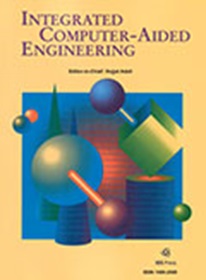利用软动态时间包络损失函数加强住宅负荷预测中的峰值预测
IF 5.3
2区 计算机科学
Q1 COMPUTER SCIENCE, ARTIFICIAL INTELLIGENCE
引用次数: 0
摘要
短期居民负荷预测在智能电网中起着至关重要的作用,它能确保能源需求与发电量之间的最佳匹配。由于住宅负荷模式固有的不稳定性,深度学习因其能够捕捉隐藏层中复杂的非线性关系而备受关注。然而,大多数现有研究都依赖于默认的损失函数,如神经网络的均方误差 (MSE) 或均值绝对误差 (MAE)。这些损失函数虽然在总体预测准确性方面很有效,但在准确预测负荷峰值方面缺乏专门的侧重点。本文介绍了软 DTW 损失函数(动态时间包装 (DTW) 的平滑表述)与其他常用损失函数的比较分析,以评估其在提高峰值预测精度方面的有效性。为了评估峰值性能,我们引入了一种使用混淆矩阵的新型评估方法,并提出了峰值位置和峰值负荷的新误差,专门用于评估短期负荷预测中的峰值性能。我们的研究结果表明,软 DTW 在捕捉和预测负荷峰值方面具有优越性,超过了其他常用的损失函数。此外,软-DTW 与其他损失函数(如软-DTW + MSE、软-DTW + MAE 和软-DTW + TDI(时间失真指数))的组合也增强了峰值预测能力。不过,这些组合软 DTW 损失函数之间的差异并不大。这些发现凸显了在短期负荷预测中利用专门的损失函数(如软-DTW)来提高峰值预测精度的重要性。本文章由计算机程序翻译,如有差异,请以英文原文为准。
Enhancing peak prediction in residential load forecasting with soft dynamic time wrapping loss functions
Short-term residential load forecasting plays a crucial role in smart grids, ensuring an optimal match between energy demands and generation. With the inherent volatility of residential load patterns, deep learning has gained attention due to its ability to capture complex nonlinear relationships within hidden layers. However, most existing studies have relied on default loss functions such as mean squared error (MSE) or mean absolute error (MAE) for neural networks. These loss functions, while effective in overall prediction accuracy, lack specialized focus on accurately predicting load peaks. This article presents a comparative analysis of soft-DTW loss function, a smoothed formulation of Dynamic Time Wrapping (DTW), compared to other commonly used loss functions, in order to assess its effectiveness in improving peak prediction accuracy. To evaluate peak performance, we introduce a novel evaluation methodology using confusion matrix and propose new errors for peak position and peak load, tailored specifically for assessing peak performance in short-term load forecasting. Our results demonstrate the superiority of soft-DTW in capturing and predicting load peaks, surpassing other commonly used loss functions. Furthermore, the combination of soft-DTW with other loss functions, such as soft-DTW + MSE, soft-DTW + MAE, and soft-DTW + TDI (Time Distortion Index), also enhances peak prediction. However, the differences between these combined soft-DTW loss functions are not substantial. These findings highlight the significance of utilizing specialized loss functions, like soft-DTW, to improve peak prediction accuracy in short-term load forecasting.
求助全文
通过发布文献求助,成功后即可免费获取论文全文。
去求助
来源期刊

Integrated Computer-Aided Engineering
工程技术-工程:综合
CiteScore
9.90
自引率
21.50%
发文量
21
审稿时长
>12 weeks
期刊介绍:
Integrated Computer-Aided Engineering (ICAE) was founded in 1993. "Based on the premise that interdisciplinary thinking and synergistic collaboration of disciplines can solve complex problems, open new frontiers, and lead to true innovations and breakthroughs, the cornerstone of industrial competitiveness and advancement of the society" as noted in the inaugural issue of the journal.
The focus of ICAE is the integration of leading edge and emerging computer and information technologies for innovative solution of engineering problems. The journal fosters interdisciplinary research and presents a unique forum for innovative computer-aided engineering. It also publishes novel industrial applications of CAE, thus helping to bring new computational paradigms from research labs and classrooms to reality. Areas covered by the journal include (but are not limited to) artificial intelligence, advanced signal processing, biologically inspired computing, cognitive modeling, concurrent engineering, database management, distributed computing, evolutionary computing, fuzzy logic, genetic algorithms, geometric modeling, intelligent and adaptive systems, internet-based technologies, knowledge discovery and engineering, machine learning, mechatronics, mobile computing, multimedia technologies, networking, neural network computing, object-oriented systems, optimization and search, parallel processing, robotics virtual reality, and visualization techniques.
 求助内容:
求助内容: 应助结果提醒方式:
应助结果提醒方式:


